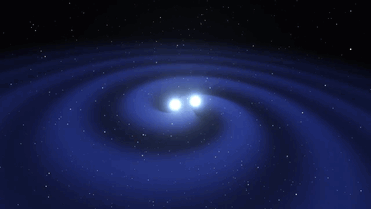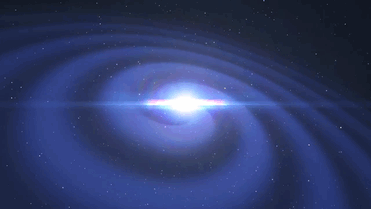Oculus System - Post 2 (Inner-most Planet)




Oculus System - Post 2 (Inner-most Planet)
The inner-most planet is a Chthonian Planet, or the core remnant of a large Ice of Gas Giant that lost its atmosphere to the solar winds. The planet is a Super-Earth mass world of 8.4 Earth Masses and a radius of 1.56 Earth’s or 9,954 kilometers in radius. The planet is extremely dense, being made almost entirely out of compressed metals with a thin silicate crust. It has an average density of 12.1 g/cm³. The surface experiences a gravitational force of 3.44 g.
This world has a water-vapor atmosphere that generates a powerful greenhouse effect on the surface. Surface temperatures reach 1,623 °F, and sodium and potassium clouds circle the planet. Pressure on the surface is so extreme, the atmosphere exists as a super-critical fluid, with an atmospheric pressure 6,511 times that of Earth. The atmosphere reflects enough sunlight that the day-side has a bright-white color that drowns out the glowing clouds.
High Resolution Pictures
Picture 1 - Inner-Hell
Picture 2 - Tiny Moon
Picture 3 - Glowing Storms
Picture 4 - Steamy Atmosphere
More Posts from Sharkspaceengine and Others










MESSENGER Spacecraft
MESSENGER (whose backronym is Mercury Surface, Space Environment, Geochemistry, and Ranging, and which is a reference to the Roman mythological messenger, Mercury) was a NASA robotic spacecraft that orbited the planet Mercury between 2011 and 2015. The spacecraft was launched aboard a Delta II rocket in August 2004 to study Mercury’s chemical composition, geology, and magnetic field.

The instruments carried by MESSENGER were used on a complex series of flybys – the spacecraft flew by Earth once, Venus twice, and Mercury itself three times, allowing it to decelerate relative to Mercury using minimal fuel. During its first flyby of Mercury in January 2008, MESSENGER became the second mission after Mariner 10’s 1975 flyby to reach Mercury.
MESSENGER entered orbit around Mercury on March 18, 2011, becoming the first spacecraft to do so. It successfully completed its primary mission in 2012. Following two mission extensions, the MESSENGER spacecraft used the last of its maneuvering propellant and deorbited as planned, impacting the surface of Mercury on April 30, 2015
Source
Image Credit: NASA/Johns Hopkins University Applied Physics Laboratory/Carnegie Institution of Washington





Pictures of the Day - December 25, 2018 (Merry Christmas)
Insight A System - Either Planet (Insight A-VIII)
Insight A-VIII is the eighth planet orbiting Insight A. It is an ice-giant with a mass 15.46 times that of Earth, and a diameter of 3.19 Earths. The planet has unusually pronounced cloud bands, and a wide-spaced ring system. It orbits it’s sun at an average distance of 4.01 AU, completing 1 orbit every 7.41 Years.
This planet has an active atmosphere with an average temperature of -213 F, and a day on the planet last 11 hours and 6 minus. 5 moons orbit the planet that are large enough to be rounded by their own gravity, including 4 larger than 2,000 kilometers across.
High Resolution Pictures
Insight A-VIII
Transiting Moon
Closeup
Asteroid Moon
View from outer-most large moon

For scientists watching the Red Planet from our orbiters, the past month has been a windfall. “Global” dust storms, where a runaway series of storms create a dust cloud so large they envelop the planet, only appear every six to eight years (that’s 3-4 Mars years). Scientists still don’t understand why or how exactly these storms form and evolve.
Read the full story HERE.
Make sure to follow us on Tumblr for your regular dose of space: http://nasa.tumblr.com.


Pictures of the Day - February 8, 2019 - (Late Post)
Weird red-tinted ice giant orbiting Bernard's Star viewed from the surface of several of it's asteroid moons.

Picture of the day 2 - January 10, 2019
Warm gas giant surrounded by a rainbow-colored ring system.
Space Engine System ID: RS 8550-1391-7-1315996-265 4 to visit the planet in space engine.

Picture of the Day 2 - January 3, 2019
A heavily cratered ice-world. This one is to make up for the missed picture of the day yesterday.
Space Engine System ID: RS 5613-489-8-16684327-414 5 to visit the planet in Space Engine
What would cause two stars to collide? What does it take for a whole planet (as massive as Jupiter) to change trajectory?
The main mechanism that would make two stars collide is gravity. This depends on several factors, some stars may wander through space and end up being attracted by the gravitational field of another star, from there, one star begins to orbit the other.

But the most common are collisions in clusters of stars, because in a star cluster the stars are very close together, especially in globular clusters.

Collisions of young stars may also occur, as most of the stars are born close to each other in clusters. Many stars are binary, formed together, but in some cases before they evolve they may end up colliding.

In the universe both collisions of active stars can occur, as can collisions of white dwarfs, neutron stars and black holes.


The orbits of the planets are determined by the gravitational pull of the Sun, so it would need some very extreme force to cause the orbit of a planet to change its trajectory, perhaps if some planet or star enters our solar system, or when the Sun goes through changes and become a white dwarf in about 5 billion years.
-
 sharkspaceengine reblogged this · 6 years ago
sharkspaceengine reblogged this · 6 years ago
My Space Engine Adventures, also any space related topic or news. www.spaceengine.org to download space engine. The game is free by the way. Please feel free to ask me anything, provide suggestions on systems to visit or post any space related topic.Check out my other blog https://bunsandsharks.tumblr.com for rabbit and shark blog.
294 posts











